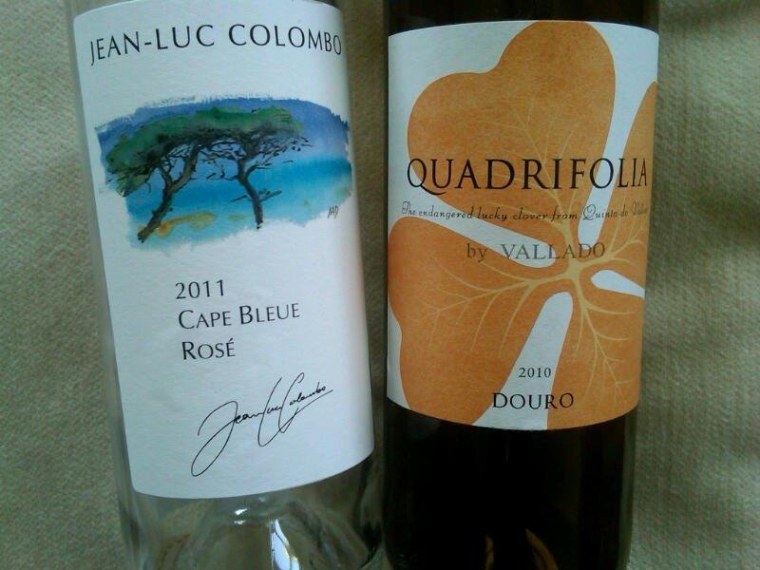Portugal is best known, of course, for Port, the fortified sweet red wine enjoyed mainly as an after-dinner drink, perhaps with cheese, more often with chocolate and, on occasion, with a good cigar. But in recent years the Douro region, where Port has been produced for centuries from dozens of indigenous red grape varieties, has been making strides as a producer of non-fortified wines.
At a recent dinner, I tasted a broad sampling of Douro reds from a number of producers. The Douro is a very warm wine region, and one of the challenges is to make wines not only with deep ripe fruit (that’s the easy part) but with finesse and refreshing acidity. What was clear at the dinner – and acknowledged by the producers – is that they are still trying to figure things out, including the use of oak, which can be a bit heavy handed.
In any event, an excellent introduction to Douro reds is the 2010 “Quadrifolia” from Quinta do Vallado, which comes with a suggested price of $15. This wine is a blend of 35 percent tinta roriz, which is better known as tempranillo in neighboring Spain, 30 percent touriga franca, 15 percent touriga nacional and 20 percent from various other grapes. Fresh, well-balanced and easy to drink, it’s aged in stainless steel tanks without exposure to oak, but shows considerable complexity with plum and blackberry tastes and secondary notes of bittersweet chococalte, coffee bean and cinnamon. Try it with pork and chicken dishes, hamburgers and pizza. As the label suggests, Quadrifolia means four-leaf clover. Imported by Quintessential Wines, Napa, California.
It’s only March, but with all the warm weather this winter, I’ve been thinking a lot about rosés. In fact, there is no reason not to enjoy these pink food-friendly wines made from red grapes throughout the year, other than the fact that many are produced in limited quantities. One of this year’s first releases is from Provence in southern France, Jean-Luc Colombo’s 2011 Cape Bleu Rosé, a wine I have found consistently pleasing over the years. This latest vintage is a blend of 60 percent syrah and 40 percent mourvèdre and is a very good value at $10 or so. It’s delicate and fruity with raspberry and cherry notes and a bit of spice on the finish. Enjoy it with fish, grilled chicken or as a refreshing aperitif. Imported by Palm Bay International, Boca Raton, Florida. Wines received as press samples.
Rosés have become increasingly popular in recent years but some people can take them or leave them. Leave a comment and let me know where you come down on rosés!
Edward Deitch is a James Beard Award-winning wine critic. Find many more of his wine reviews and commentary on his blog, Vint-ed.com, and follow him on Twitter.
More from Bites:
